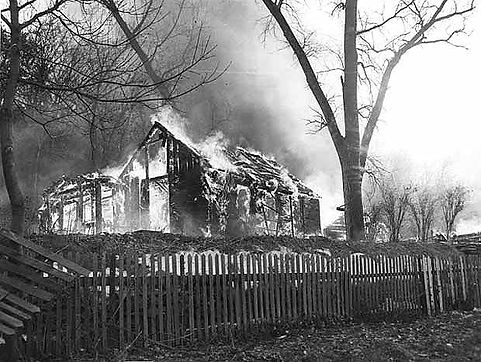Swede Hollow Park: Historical Overview

Origins
Tucked away in a small valley below the former Hamm's Brewery is a city park that once was the home of the successive waves of immigrant communities in Saint Paul's East Side. In 1839, pioneer Edward Phalen built a cabin nearby and the nearby creek which became the lifeblood of these future communities became known as Phalen Creek. Trappers, lumbermen, and laborers first built structures along the creek seeking protection from the extremes of Minnesota’s winters and summers.

Immigrant Communities
In the late 1850s, Swedish newcomers moved into or rented the crude shanties along the creek and named their village “Svenska Dalen” which eventually became known as Swede Hollow. Over the next 50 years, as one wave of immigrants moved up and out of the hollow, another group moved in. In the late 1800s, Polish and then Italian families moved in as the Swedes moved out. By the 1920s and 1930s, Mexican laborers became the dominant group in the hollow.

Life in the Hollow
Residents made do with very basic housing and no city services. Few homes had running water or sewers, and families relied on Phalen Creek and outhouses for water and waste. Swede Hollow homes were never electrified. Despite hardship, immigrant families beautified their yards with gardens, grape arbors and picket fences reflecting Swedish and Italian traditions. Much like Chinatown in San Francisco, Swede Hollow gave new Americans “a chance to transition into American society while retaining the values and traditions of their homelands.” Men often worked in nearby breweries, mills, railroads, or streetcar lines.

End of an Era and New Beginnings
Near the end of 1956, a city health investigation found that the hollow’s houses had no sanitation and that Phalen Creek was contaminated. Officials deemed Swede Hollow a health hazard and displaced 16 families when they burned the 13 remaining structures to the ground.
In October of 1976, after 20 years of neglect, neighborhood volunteers and the Saint Paul City Parks Department rehabilitated the hollow, and it was formally dedicated as a city nature park and an interpretive historical site.

Park Access and Features
The Bruce Vento Regional Trail runs north-south through Swede Hollow Park. On the north end, the smokestack and old Hamm's Brewery (Theodore Hamm’s Brewing Company) buildings overlook the ravine. In the northern portion of the hollow, there is a central gathering space centered by a piece of public art affectionately known by locals as Swedehenge. The western access to the park is through Drewry Tunnel. Stairs down from Greenbrier Street on the bluff provide access from the east. And, a rare helicoidal tunnel under 7th Street East provides access from the south.

An East Side Hidden Gem!!
Swede Hollow Park is one of Saint Paul’s hidden gems. It is popular with a diverse group of visitors, including those interested in its history and the stories of the immigrant communities who lived there, as well as those who enjoy outdoor activities like hiking, biking, and bird-watching. It is also home to Art in the Hollow, a growing art festival boasting over a hundred art vendors occurring every first Saturday of June.
